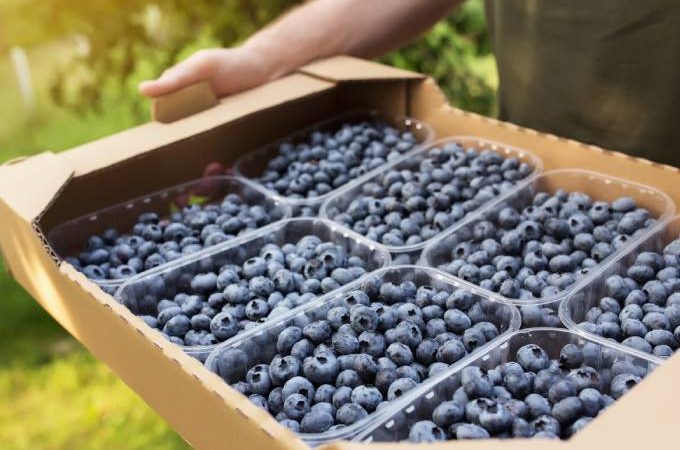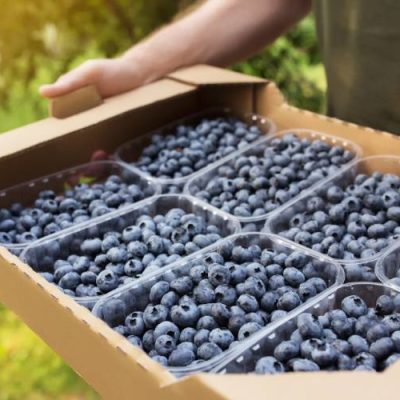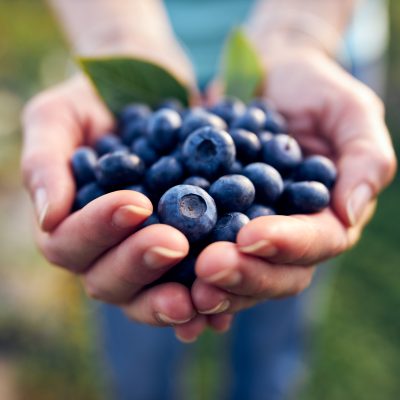Global blueberry industry bets on quality and growth toward 2027
- . August 2025
The global blueberry industry is currently facing a critical transformation, characterized by rapid growth, changes in commercial windows, and an increasingly demanding consumer.
Mario Steta, International President at the International Blueberry Organization, was at the 15th Annual Aneberries Congress in Guadalajara, Mexico. Along with other industry leaders from Chile, Mexico, Peru, and Colombia, Steta took the stage to analyze the industry at a global scale.
With markets such as China, the U.S., Canada, Germany, and Poland showing the greatest consumption potential, the panel highlighted the sector’s efforts to elevate fruit quality through the engineering of new genetic varieties and differentiation strategies. They also underscored plans to unlock new markets such as Japan, South Korea, and Indonesia.
While countries like Peru are projecting a 25 percent volume growth for next season, the industry leaders agreed that the true challenge for blueberry producers doesn’t lie in tonnage, but in ensuring a consistent product that’s superior in flavor and meets consumer demand.
Before the panel began, Mario Steta reminded the audience that in 2008, global blueberry production was 200,000 tons, a number that later increased to 500,000 in 2012 and then to 800,000 in 2017. Currently, the number stands at 1.5 million tons, but Steta is ambitious: “Our goal is to reach 2.5 million tons by 2027,” he stated.
Chile: lower volume, greater quality
Héctor Enrique Luján, Global CEO at Hortifrut, talked about the blueberry industry in Chile, noting that export volumes have decreased for fresh berries, whereas the trend is the opposite for frozen fruit. The executive said the industry has transitioned toward higher quality, seeking novel genetics and new varieties able to better withstand the trip between markets.
Luján underscored the fact that Chilean blueberries have a significant presence in markets such as Europe, China, and the United States. Regarding next season, the executive forecasted a similar volume to 2024’s, “maybe slightly lower, but with a strong transition towards new genetics.”
He thinks Chile’s industry can be reinvigorated and consolidate once again as a great blueberry producer “in a particular commercial window going from December to February.”
Mexico: A reduced planted surface with a vision for growth
Berries Paradise CEO César Ortiz explained that during the 2023-2024 season, Mexico went from having over 32 thousand planted acres to a little over 27.5 thousand—a reduction of over 2.5 percent. However, the executive forecasted significant growth for the upcoming years, with a goal of 100,000 tons.
Colombia: an emerging industry with huge potential
Insights on Colombia’s blueberry industry were in the hands of Freddy Cortés, President of AsocolBlue Colombia. He explained the country has approximately 2,100 planted acres, and even though it’s an emerging market, Colombia offers a key advantage: it can produce blueberries all year round. “Our season begins on week one and ends on week 52,” he stated.
Cortés underscored the importance of having proven genetics and good productivity, which gives Colombian blueberries their characteristic intense flavor.
“In Colombia, we have to do things the right way, with the sole purpose of having a quality fruit that wins over the consumer and the local market,” he said.
The Peruvian blueberry industry
“We must deliver the best product possible to expand demand. Quality must be our priority. Today, consumers are better informed—they know about varieties and origins, which triggers healthy competition,” he claimed.
For Ortiz, Mexico’s blueberry industry has room and the opportunity to expand and meet growing consumer demand for a fresh product.
“We’re face to face with the biggest market in the world, only 24 hours away from the final consumer across the border. It’s undoubtedly a privileged position,” he said.
Miguel Bentín, President at Proarándanos, reminded the Aneberries audience that only the week before, Peru had finished its season with a production of around 318,000 tons. The executive also forecasted a 25 percent growth spurt for the industry in the 2024-2025 season, with a goal of 405,000 tons.
However, Bentín warned that we must not confuse volume with success: “Our focus must always be on how we face the challenges of this growth. Today, our main competition is ourselves.”
Bentín added that Peru is working towards flattening out production curves and opening up new markets. “We think that in the next three to five years we’ll see growth in Japan, Korea, and Indonesia,” he pointed out.
The consensus: quality is the Northern Star
Regardless of the particulars of each of their markets, the industry leaders’ biggest agreement was that the goal was to always strive for quality.
“If we don’t have a good quality, good flavor, a good service, we simply cannot play the game,” said Luján. He added that the industry must keep in mind that the biggest markets have also become the strongest producers.
However, there are also cases like Mexico’s, where per capita consumption is significantly lower compared to Colombia. “There are lots of opportunities in the world. You also have to understand that the world is producing blueberries in more and more locations,” said Luján.
08-12-2025
Source: Freshfruitportal.com
.







